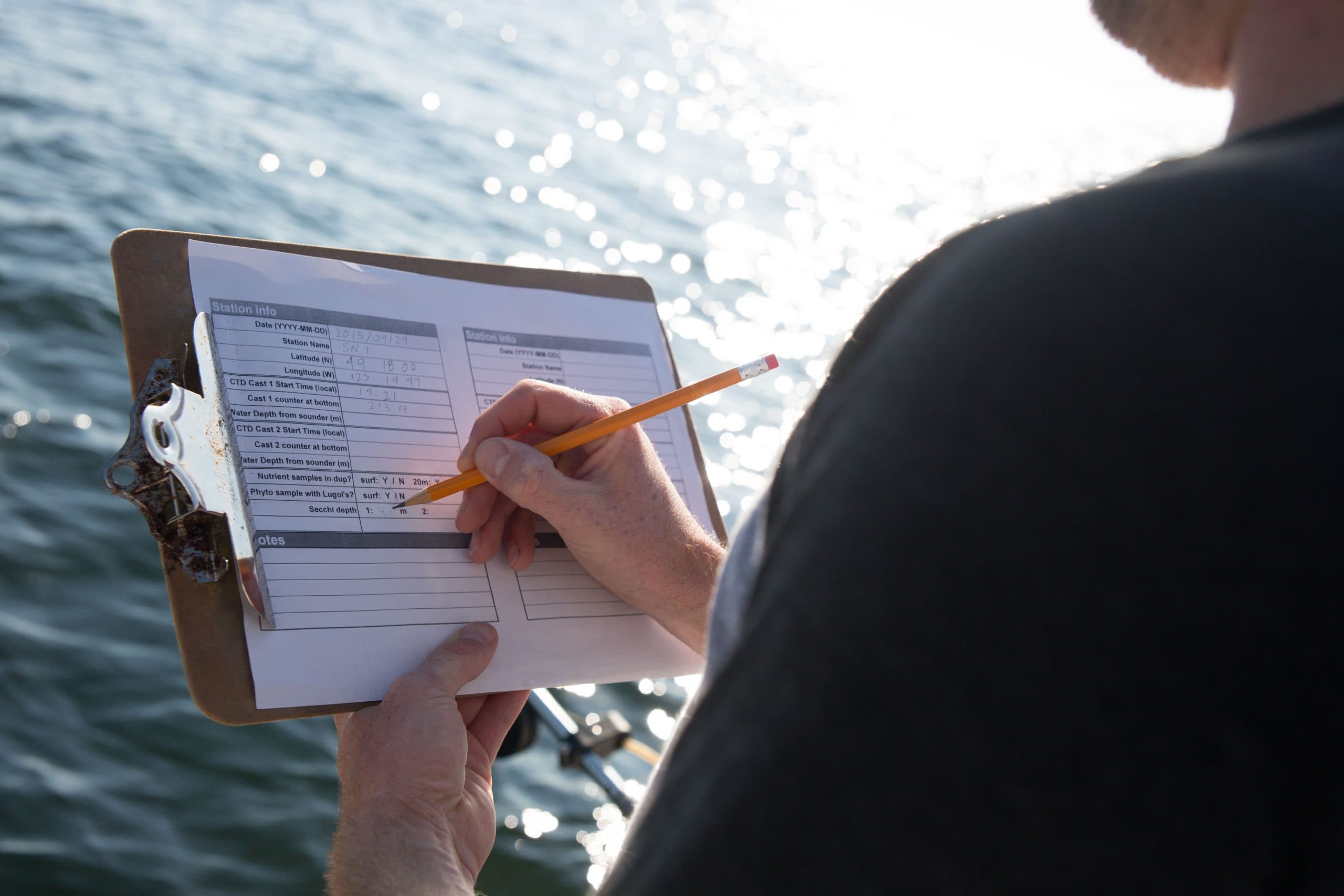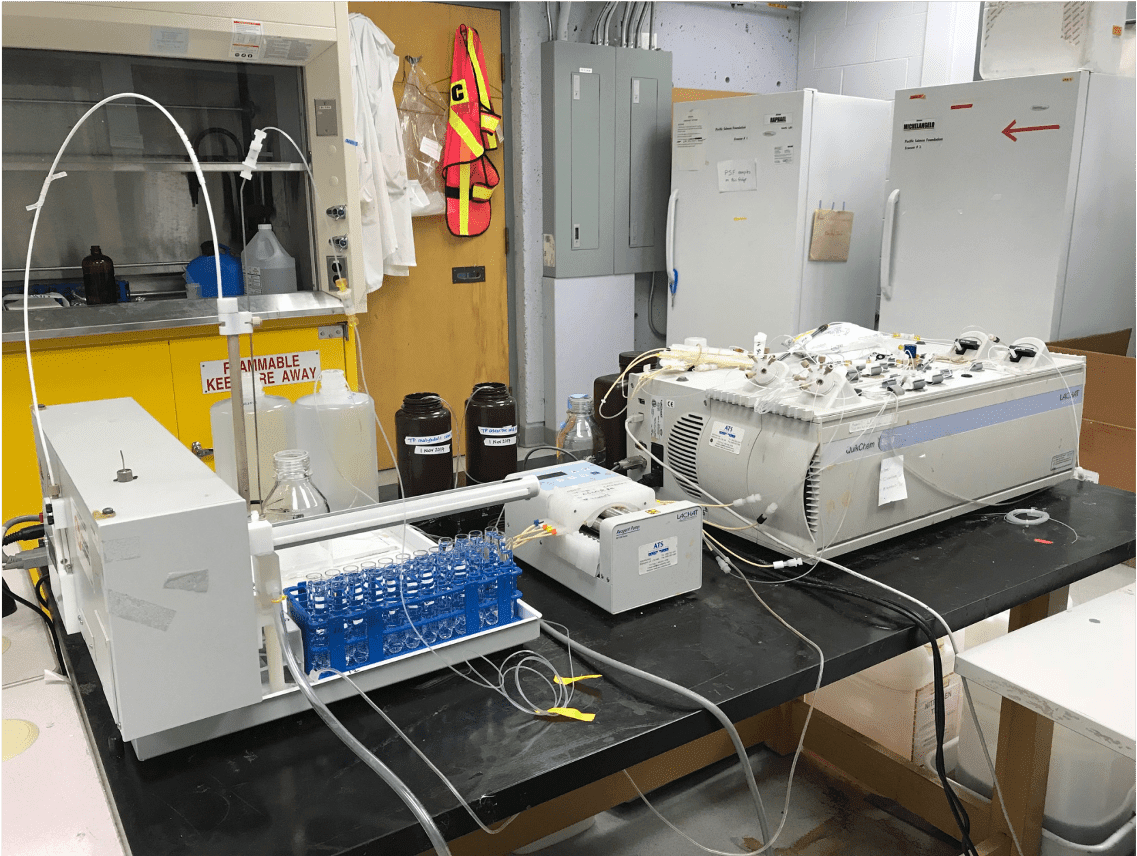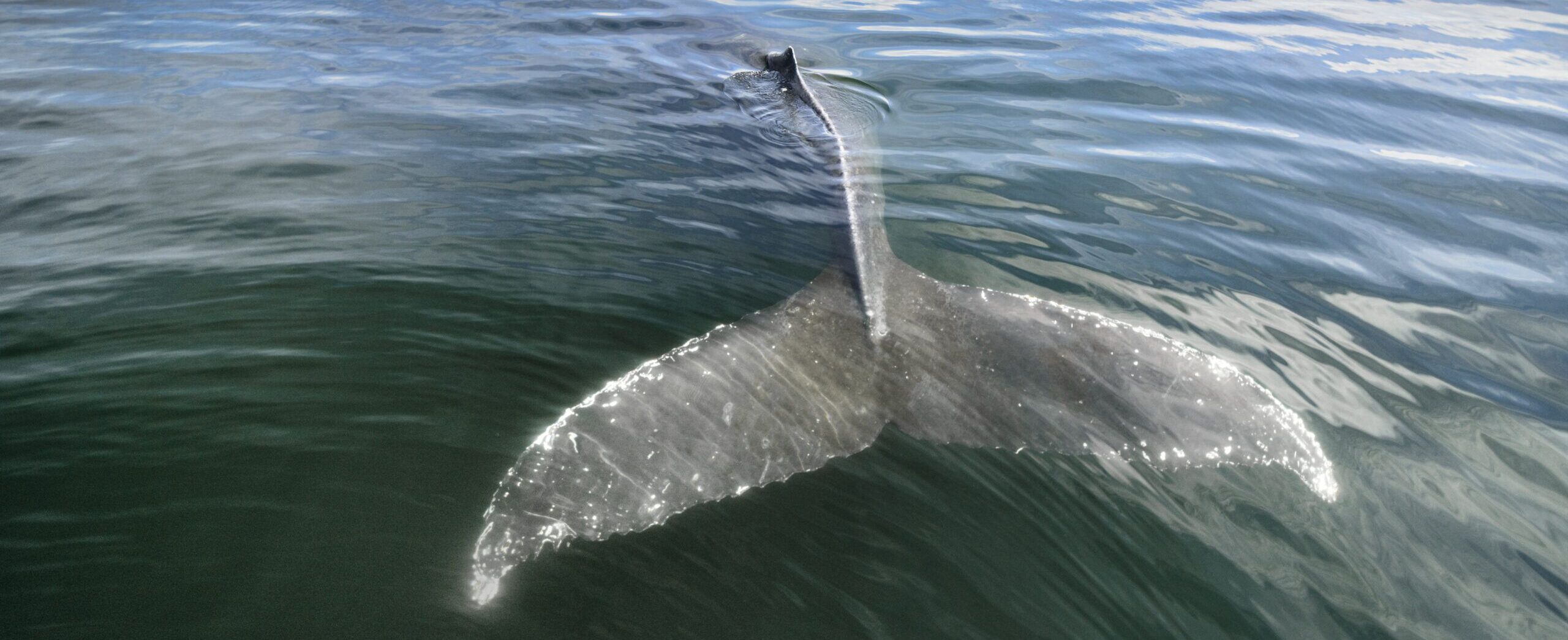Nutrients in the Strait
The growth of planktonic plant life requires light, as well as the presence of inorganic elements (carbon, nitrogen, phosphorus, silicon) which are incorporated into the plants as part of the process of primary production. The major macro-nutrients are: nitrogen in the form of nitrate (NO3–), phosphate (PO43-) and silicate (usually written as SiO2, although more usually appearing in the form of silicic acid Si(OH)4).
When these macronutrients are present in abundance, primary production is usually limited by the available light, which is typically the case in winter. During summer, phytoplankton can grow until one or more of the macronutrients are exhausted, primary production is then limited by the rate at which nutrient rich waters at (dark) depths can be mixed up to the surface. Spring is a special time, as increasing light levels will suddenly result in a “bloom”, dominated by diatom species, that rapidly draws down the supply of nutrients at the surface. Depending on weather conditions, this bloom, marked by very high phytoplankton concentrations, can suddenly appear in as little as a few days, followed by a “crash” once near-surface nutrients are exhausted.


Our Methods
Nutrient analysis water samples are collected at depths of 0m and 20m. Water is obtained from a ‘Niskin’-type sampling bottle, attached to a rope marked at various depths and kept vertical by both a weight at the bottom and maneuvering of the boat in the direction of any tilt. These bottles are lowered in an open position, and then closed to trap a water sample using a mechanism triggered by the descent of a weighted “messenger” on the sampling rope.
Water from the Niskin is subsampled, filtered, and frozen for storage. Then, samples are thawed and analyzed for the concentration of dissolved macronutrients in a laboratory. Currently the Citizen Science Oceanotraohy Program uses an autoanalyzer to allow for the consistent analysis of a large set of samples.
Errors in any nutrient dataset can arise from sample handling and analytical problems in the laboratory. Examples include mislabelling of samples, problems in filtering, and not freezing and/or thawing the samples rapidly enough. It is important to consider the effects of these errors. Some of our quality-control practices include:
- Examining correlations between the different nutrients in property/property plots. An increased scatter reflects variations in the type of phytoplankton that grow in the Strait, as some species use more silica than others. Large outliers in the plots may indicate sample handling problems.
- We have an improved our colour-coding system of labelling for samples from different depths to avoid recording samples incorrectly.
Read more about our methodology here.
Our Data
The Citizen Science Oceanography Program team has worked on processing their data to answer a number of research questions. They have produced figures displaying nutrient time series at various depths, as well as maps of seasonal nutrient variation in the Strait of Georgia.
Click here to learn more about nutrients, their methodology, and to acces the figures. Click here to access the data.
References
CSOP Nutrient and Chlorophyll data used in these figures are available through our data portal.
Nutrient data from Fisheries and Oceans data are available through their archive at waterproperties.ca.

